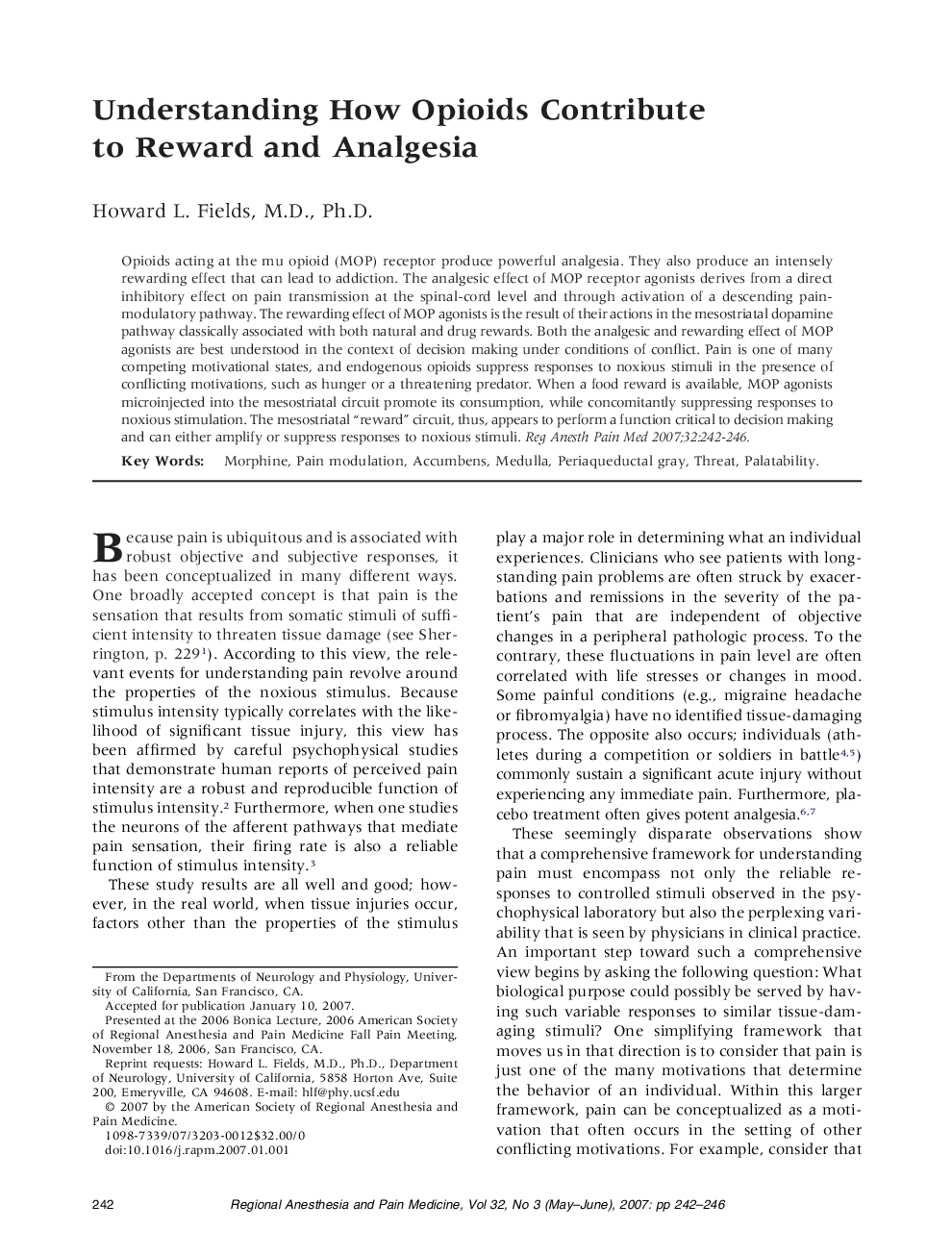| کد مقاله | کد نشریه | سال انتشار | مقاله انگلیسی | نسخه تمام متن |
|---|---|---|---|---|
| 2767253 | 1151134 | 2007 | 5 صفحه PDF | دانلود رایگان |
عنوان انگلیسی مقاله ISI
Understanding How Opioids Contribute to Reward and Analgesia
دانلود مقاله + سفارش ترجمه
دانلود مقاله ISI انگلیسی
رایگان برای ایرانیان
کلمات کلیدی
موضوعات مرتبط
علوم پزشکی و سلامت
پزشکی و دندانپزشکی
بیهوشی و پزشکی درد
پیش نمایش صفحه اول مقاله

چکیده انگلیسی
Opioids acting at the mu opioid (MOP) receptor produce powerful analgesia. They also produce an intensely rewarding effect that can lead to addiction. The analgesic effect of MOP receptor agonists derives from a direct inhibitory effect on pain transmission at the spinal-cord level and through activation of a descending pain-modulatory pathway. The rewarding effect of MOP agonists is the result of their actions in the mesostriatal dopamine pathway classically associated with both natural and drug rewards. Both the analgesic and rewarding effect of MOP agonists are best understood in the context of decision making under conditions of conflict. Pain is one of many competing motivational states, and endogenous opioids suppress responses to noxious stimuli in the presence of conflicting motivations, such as hunger or a threatening predator. When a food reward is available, MOP agonists microinjected into the mesostriatal circuit promote its consumption, while concomitantly suppressing responses to noxious stimulation. The mesostriatal “reward” circuit, thus, appears to perform a function critical to decision making and can either amplify or suppress responses to noxious stimuli.
ناشر
Database: Elsevier - ScienceDirect (ساینس دایرکت)
Journal: Regional Anesthesia and Pain Medicine - Volume 32, Issue 3, May 2007, Pages 242-246
Journal: Regional Anesthesia and Pain Medicine - Volume 32, Issue 3, May 2007, Pages 242-246
نویسندگان
Howard L. M.D., Ph.D.,